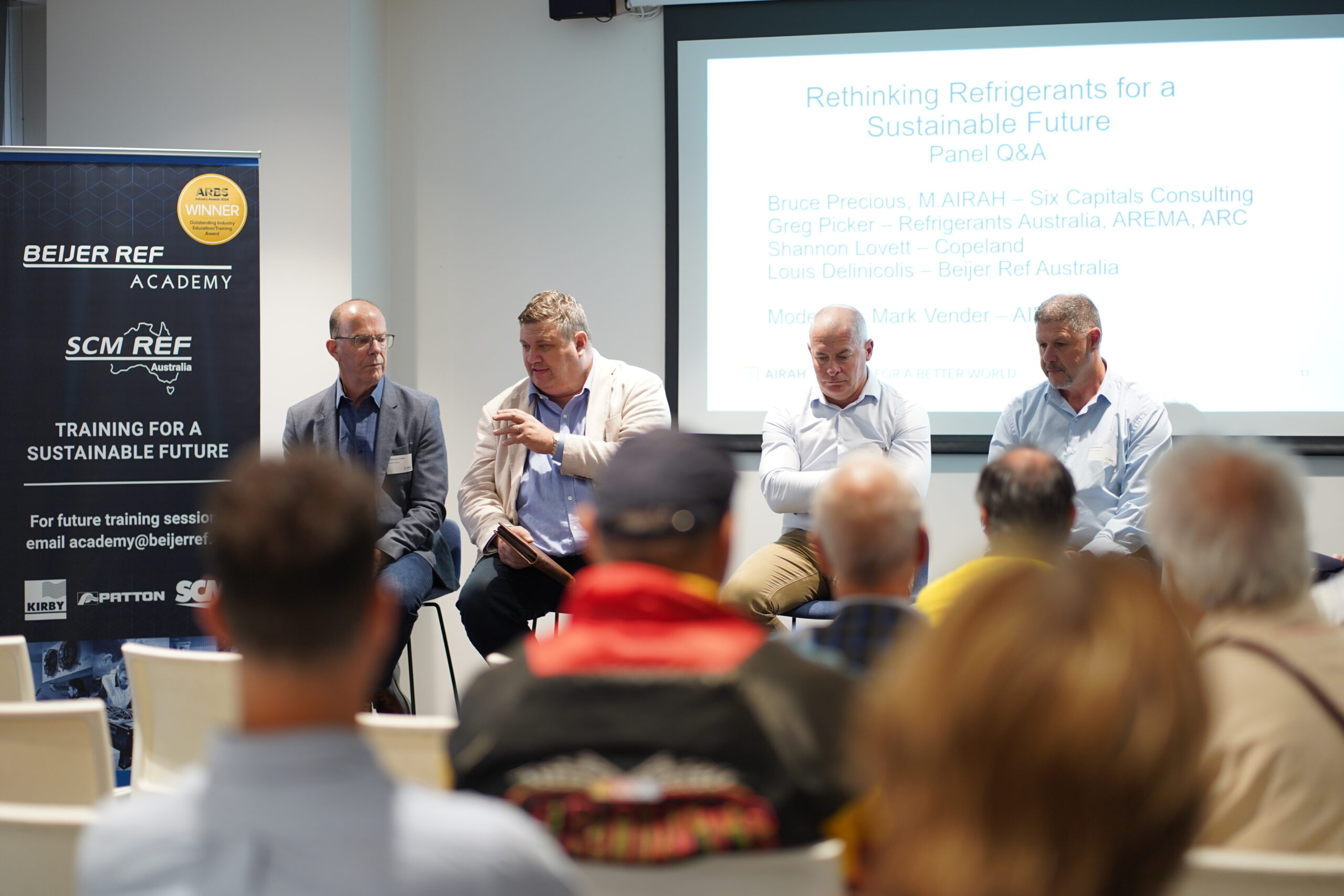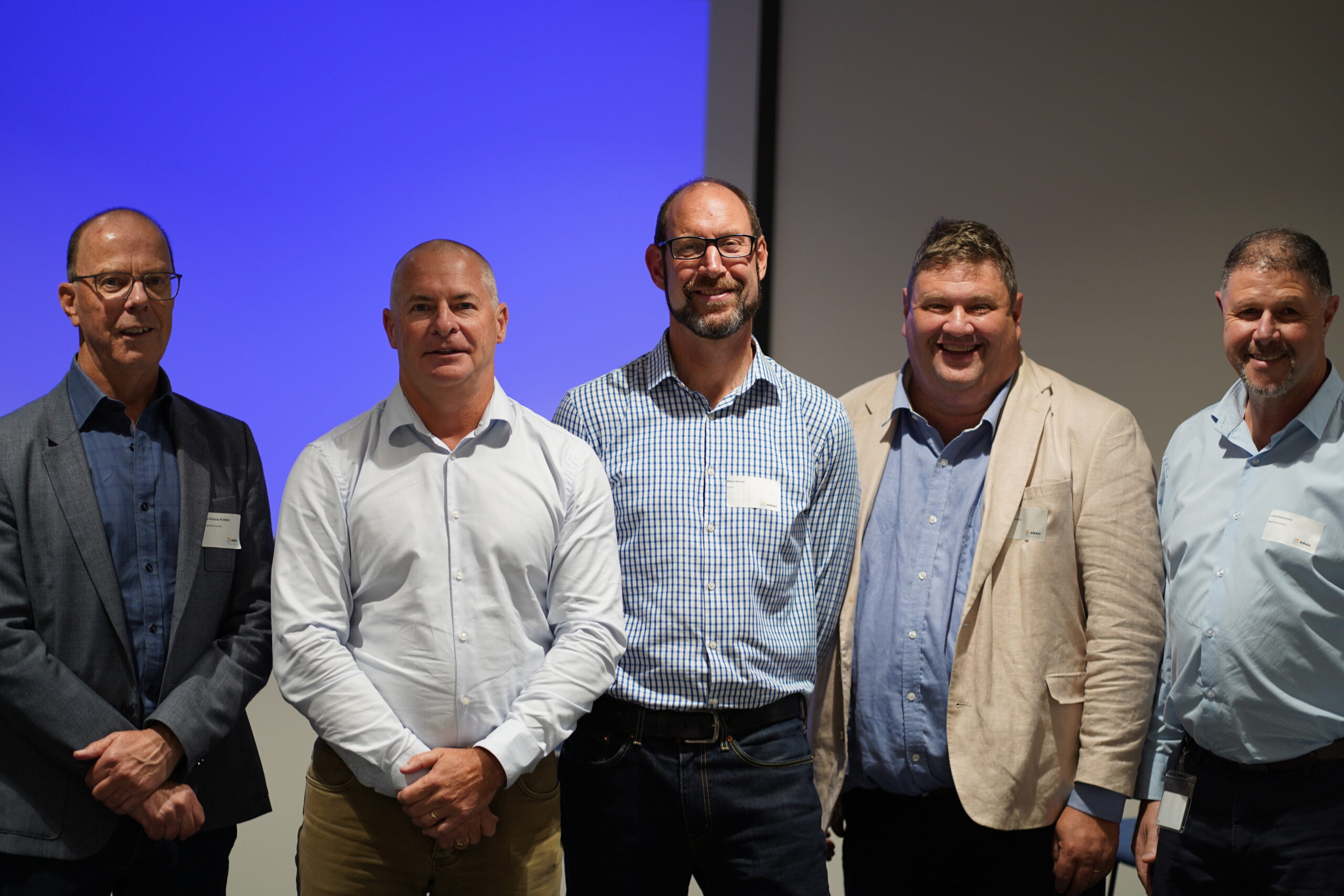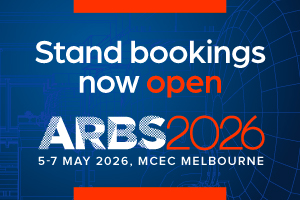Rethinking refrigerants for a sustainable future
As refrigerants become a focus in the built environment, AIRAH’s NSW division organised a panel session to explore how we can transition to alternatives with lower environmental impact.

Refrigerants, once a topic mostly restricted to a technical audience working in the HVAC&R sector, have become a major talking point. They are emerging as an emissions source that needs to be tackled on our journey to net zero, with added concerns about safety risks such as flammability and toxicity that need to be managed, as well as environmental impacts such as forever chemicals.
To explore the path forward, AIRAH’s NSW Division organised a panel session with support from Beijer Ref Australia comprising experts from different parts of the industry. It included Bruce Precious, M.AIRAH, from Six Capitals Consulting; Greg Picker from Refrigerants Australia, AREMA and ARC; Shannon Lovett from Copeland; and Louis Delinicolis from Beijer Ref Australia. The session was moderated by Mark Vender, Advocacy and Policy Manager at AIRAH.


The session began with the context of the refrigerant transition and why there is a growing focus on refrigerants. Grid decarbonisation, building electrification, the global phase down of HFCs, changes in government policy, and increased stringency of financial reporting are all forcing the built environment to respond.
Key takeaways from the session included:
- Australia faces a stark challenge as HFC refrigerant use outstrips available bulk supply – this is already occurring and is expected to become more acute in the coming years.
- Some existing HFC systems can be retrofitted to lower-GWP refrigerants, with the right ancillaries and approach.
- End users are either not aware of the looming supply issue, or are not considering a long-term strategy because of more immediate business concerns. This is particularly apparent in the hospitality sector, where owners are not sure if they will still be operating in a year or two.
- There is an information gap for many end-users in terms of refrigerant options and the implications of refrigerant selection.
- Although additional regulation would help move industry to lower-impact refrigerants, and although action on refrigerants has been flagged in documents such as the Built Environment Sector Plan, government is not showing signs of action.
- PFAS refrigerants and refrigerants that break down into PFAS are a major concern. There is a need to identify an “end game” for different applications – generally natural refrigerants – and move in this direction as quickly as possible, though there are issues with cost and availability.
- There is great room for improvement in product stewardship, including maintenance of systems, leak detection, and handling of refrigerant at end of life.


“The session highlighted the need for urgent action across the board, and the challenges and potential solutions in different sectors,” says Vender.
“It was valuable to get perspectives from building owners and developers, manufacturers, and suppliers of equipment and refrigerants. At times the conversation was robust, which is understandable given the scale of the challenge.”
“This issue is only going to become more pressing, and solutions will rely on collaboration from all parts of the supply chain, as well as end-users.”
AIRAH Advocacy and Policy Manager Mark Vender
PREV
NEXT
Comments
Advertisements
Recent news
- Excellence in Training – Inderpal Saund, Beijer Ref Academy
- 2025 AIRAH National Awards: Louvreclad wins Excellence in Innovation – Best New Product
- 2025 AIRAH National Awards: Woolworths Group wins both Excellence in Refrigeration and Excellence in Innovation
Latest events
- Excellence in Training – Inderpal Saund, Beijer Ref Academy
- 2025 AIRAH National Awards: Louvreclad wins Excellence in Innovation – Best New Product
- 2025 AIRAH National Awards: Woolworths Group wins both Excellence in Refrigeration and Excellence in Innovation
 Nick Johns-Wickberg
Nick Johns-Wickberg

Leave a Reply